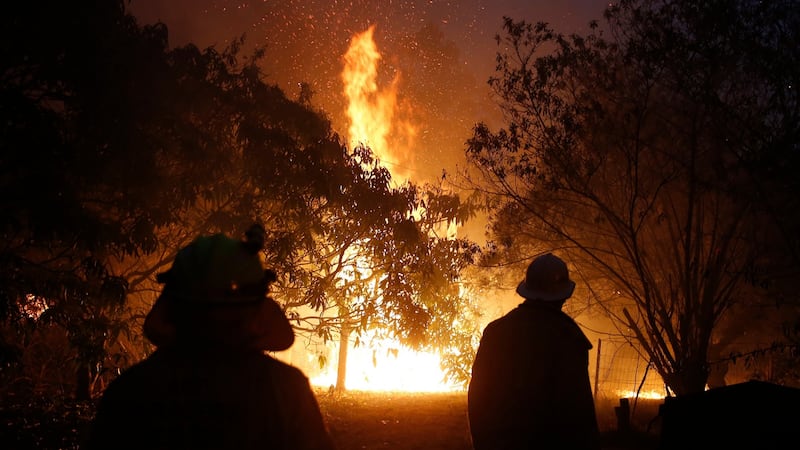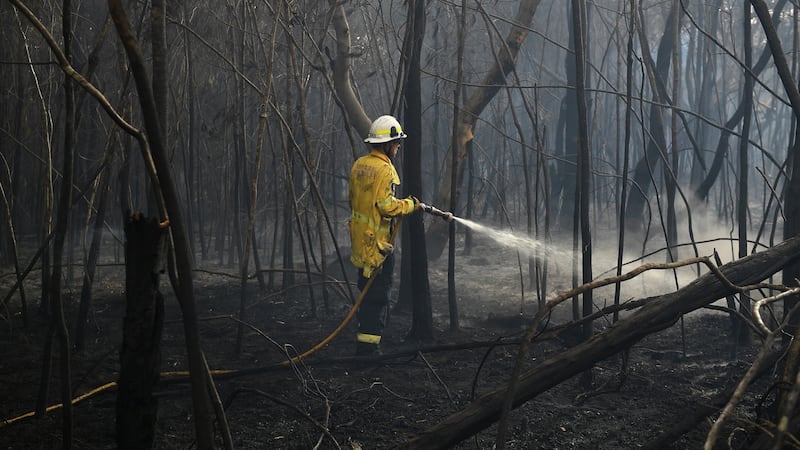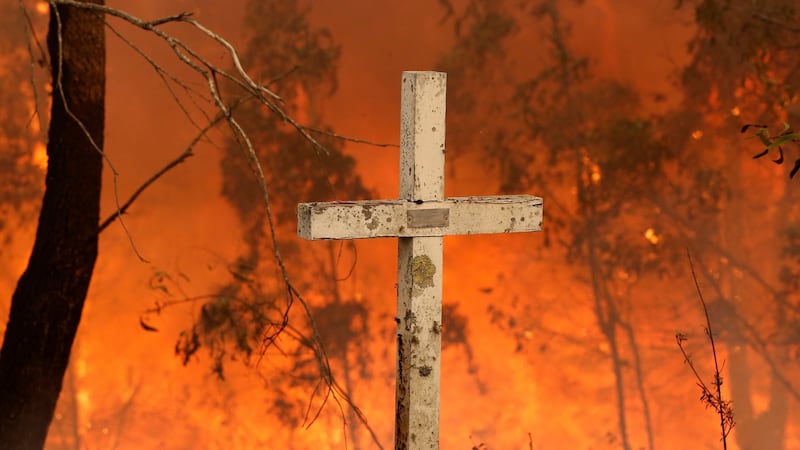Fires raged across a swathe of Australia's east coast on Tuesday, destroying more homes and shrouding Sydney in smoke from a blaze authorities fear they will be unable to control until next week.
An aircraft was diverted to drop fire retardants on bushfires threatening homes in Sydney’s northern suburbs. Television footage showed some of the substance overshot the blaze, colouring houses and vehicles pink and red.
Officials were responding to 11 emergency warnings in New South Wales (NSW) by evening as about half the 70 fires across the state burned uncontrolled in conditions termed "catastrophic".
Southerly change has reached #Sydney, with a 69 km/h wind gust at Sydney Airport. The temp dropped from 32.4°C to 20.5°C in 11 mins!
— Bureau of Meteorology, New South Wales (@BOM_NSW) November 12, 2019
The change is yet to reach the firegrounds so the situation remains extremely volatile in these areas. Weather warnings https://t.co/F9kkaInx0H pic.twitter.com/WrIhvE1hJo
"We've got a long way to go yet before we can say we're comfortable with the state of the fires," New South Wales Rural Fire Service commissioner Shane Fitzsimmons told reporters in Sydney.
While conditions are expected to ease on Wednesday, he said a forecast for severe weather into the weekend and another burst of hot air next week means “we simply aren’t going to get the upper hand on all of these fires”.
The threat has sharpened attention on the policies of Australia’s conservative government to address climate change, which meteorologists have said was extending the length of the fire weather season.
Hundreds of protesters gathered in Sydney on Tuesday demanding more firefighting resources and urging stronger climate action.
Aaron Crowe (38), who lost his two-bedroom home in NSW’s mid-north coast, joined the rally as he tipped some of the charred remnants of his house onto the pavement outside NSW parliament, local media reported.
“In this bucket is my house,” he told the crowd.



Prime minister Scott Morrison, a vocal supporter of Australia’s coal industry, has declined to answer questions about whether the current fires were a result of climate change.
‘Overwhelmed’
“The government says this isn’t the time to talk about climate change – I completely disagree, we should have been talking about this years ago,” said Carol Sparks, mayor of Glen Innes, north of Sydney, where two people died at the weekend.
“We are overwhelmed with the intensity of this fire and climate change is responsible.”
The extent of damage from Tuesday’s fire was not known yet, with dangerous conditions expected to continue into the evening.
Bushfires are a common and deadly threat in Australia’s dry summers but the ferocity and early arrival of this outbreak in the southern hemisphere spring has caught many by surprise.
Blazes have been spurred by extremely dry conditions after three years of drought in parts of NSW and Queensland, which experts say has been exacerbated by climate change.
The current outbreak, which killed three people, has been fanned by an unprecedented combination of high temperatures and strong winds. The bushfires have consumed more than a million hectares of land and damaged or destroyed 12 more homes on Tuesday, taking the toll to at least 150 so far.
The worst of the weather was not expected until later in the evening or closer to nightfall, as winds whip up.
Firefighters were closely watching a blaze in greater Sydney, especially as aircraft operations will be grounded at night.
In Sydney, home to five million people, health authorities urged people with respiratory issues to stay indoors because the city was covered by a “hazardous” smoky haze.
Around 600 schools and colleges were closed across the state. NSW education minister Sarah Mitchell said nine public schools across the state’s north were evacuated.
The fires also forced organisers to cancel the season-ending Rally of Australia, which pitted Hyundai against Toyota. – Reuters














